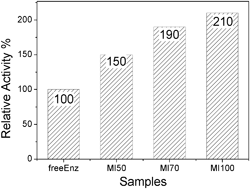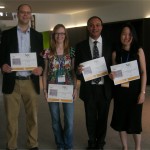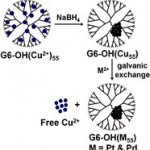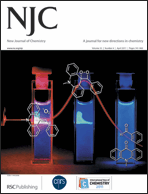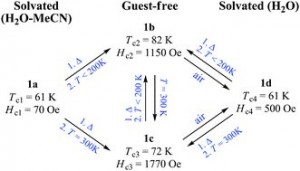We are pleased to present a selection of our authors of the May issue of NJC. We thank each of them for accepting our invitation and having kindly taken some of their time to answer a few questions for us.
 Our first author is Dr. Cecilia Devi Wilfred who is Associate Professor at the Universiti Teknologi PETRONAS (Perak, Malaysia). Her current research interests are mainly focused on Ionic Liquids and their applications. In her NJC paper, Cecilia and co-workers report on the synthesis of low densities phosphonate-based nitrile ionic liquids.
Our first author is Dr. Cecilia Devi Wilfred who is Associate Professor at the Universiti Teknologi PETRONAS (Perak, Malaysia). Her current research interests are mainly focused on Ionic Liquids and their applications. In her NJC paper, Cecilia and co-workers report on the synthesis of low densities phosphonate-based nitrile ionic liquids.
The high reputation of the journal which is peer-reviewed to the highest standards was Cecilia’s motivation behind her submission to the journal.
Outside of the lab, Cecilia enjoys reading.
Effect of sulfonate-based anions on the physicochemical properties of 1-alkyl-3-propanenitrile imidazolium ionic liquids by Abobakr Khidir Ziyada, Mohamad Azmi Bustam, Thanapalan Murugesan and Cecilia Devi Wilfred, New J. Chem., 2011, 35, 1111-1116; DOI: 10.1039/C0NJ00950D.
Our next author is George E. Kostakis, Researcher at the Karlsruhe Institute of Technology (Karlsruhe, Germany). George’s research interests focus on coordination polymers, coordination cluster topology and water structures.

In this issue of NJC, George has authored the article Structural variation from 1D chains to 3D networks: A systematic study of coordination number effect on the construction of coordination polymers using the terepthaloylbisglycinate ligand by George E. Kostakis, Luigi Casella, Athanassios K. Boudalis, Enrico Monzani and John C. Plakatouras, New J. Chem., 2011, 35, 1060-1071; DOI: 10.1039/C0NJ01009J. “A systematic investigation of the coordination chemistry of terepthaloylbisglycinate with different metal centres which shows that apart from the coordination number of the metal centre, there are several factors affecting the network dimensionality for the room temperature reactions”, explains George who chooses NJC for the publication of this article due to the journal’s high quality and wide readership.
In his free time, George loves spending time reading, biking, listening to music and cooking.
 Hongchen Gu is Professor at the Nano Biomedical Research Center, Med-X Research Institute School of Biomedical Engineering from the Shangai Jiao Tong University (Shangai, China).
Hongchen Gu is Professor at the Nano Biomedical Research Center, Med-X Research Institute School of Biomedical Engineering from the Shangai Jiao Tong University (Shangai, China).
His current research interests are the synthesis of nanoparticles for biomedical applications, the magnetic properties studies of nanoparticles and drug and gene delivery nanoparticles-based systems.
In this NJC issue paper, Hongchen and co-workers describes the synthesis of a series of magnetite nanoparticle clusters and single nanoparticles by using polyols with different reductive abilities. “This study indicates that growth kinetics has great impact on the secondary structure of magnetite nanoparticles and determines the morphology evolution of the nanoparticles” says Hongchen.
Facile synthesis and morphology evolution of magnetic iron oxide nanoparticles in different polyol processes by Changming Cheng, Fangjie Xu and Hongchen Gu, New J. Chem., 2011, 35, 1072-1079; DOI : 10.1039/C0NJ00986E.
“NJC was chosen as it is a high impact and fast editing journal in chemistry”
Reading and playing table tennis are Hongchen’s favorite activities.
Closing this month’s authors selection, Neerish Revaprasadu is Professor of Inorganic Chemistry and Chair of Nanotechnology at the University of Zululand (Kwadlangezwa, South Africa).
His current research interest is inorganic materials chemistry and he has authored in this NJC issue the paper Heterocyclic dithiocarbamates: precursors for shape controlled growth of CdS nanoparticles by Linda Dyorisse Nyamen, Viswanadha Srirama Rajasekhar Pullabhotla, Adeola Ayodeji Nejo, Peter Ndifon and Neerish Revaprasadu, New J. Chem., 2011, 35, 1133-1139; DOI: 10.1039/C1NJ20069K.
“The journal has a good readership and is multidisciplinary. The feedback from the editors is always helpful and constructive and also very quick. I have always had a good experience with NJC.”
Out of the lab, Neerish’s favorite activities are reading and travelling.












